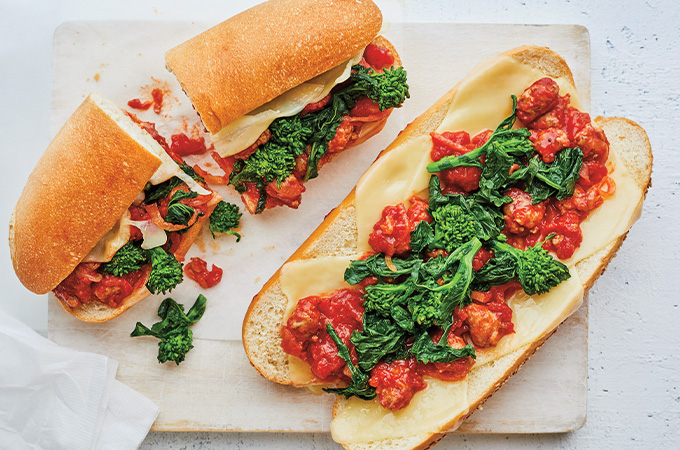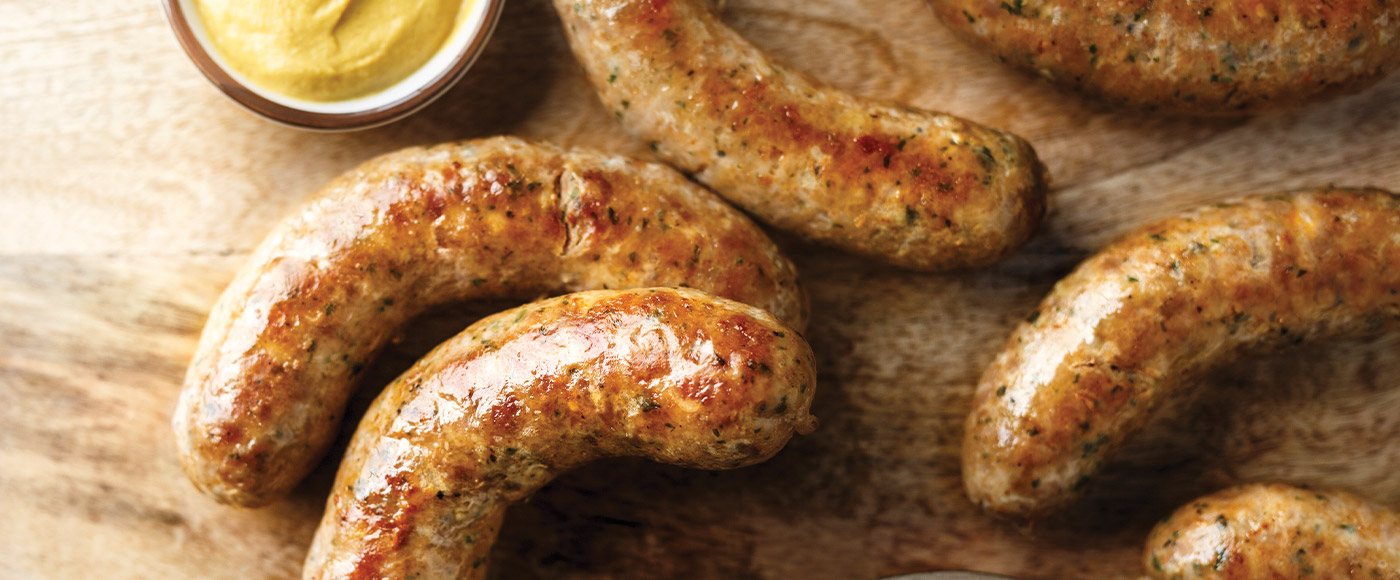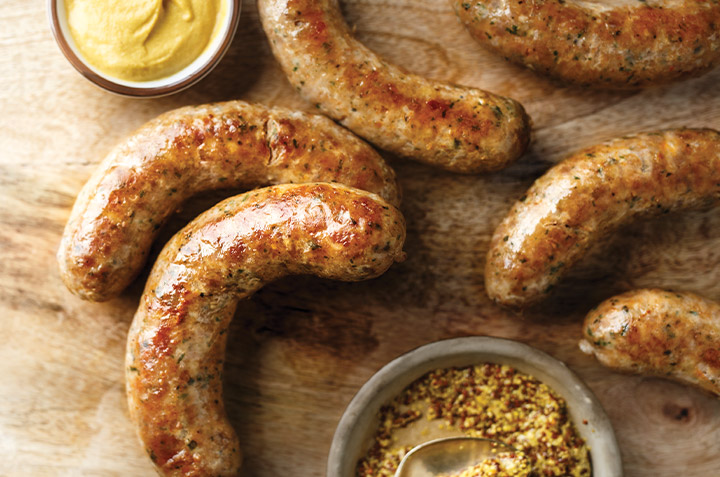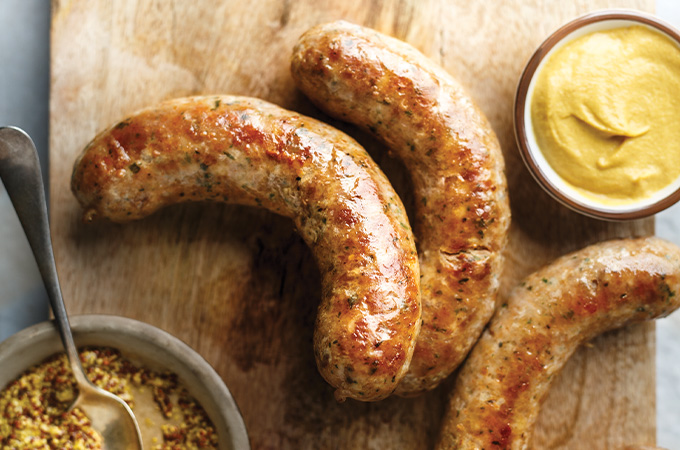1. The Meat
For sausages that are neither dry nor greasy, the choice of cut is key. Pork shoulder, in particular, has a meat-to-fat ratio that’s ideal for assuring great texture and carrying flavour. Remember to leave a thin layer of fat around the meat when you remove the rind.
2. The Seasoning
To create a sausage that goes well with everything, opt for milder flavours. We seasoned the pork with Italian-style sausage ingredients (fennel, garlic, chili), as well as fresh herbs and mustard. To determine the perfect amount of seasoning, do a few taste tests. Fry a bite-sized patty in a skillet, sample it, and then adjust the herbs and spices until the balance is to your taste.
3. The Accessories
Use the grinder and sausage stuffer that go with your stand mixer. Grinding your own meat is optional (you can also ask the butcher to do it for you), but the sausage stuffer is essential for making consistently shaped sausages that stand up to cooking. If you don’t have a stuffer, ditch the casings, make 4-ounce (115 gram) patties, and either fry them up in a skillet or freeze them to use in any recipe that calls for sausage meat, like these sausage and rapini sandwiches.

Sandwiches
Sausage and Rapini Sandwiches
4. The Casing
There are different varieties of casing:
- vegetable
- synthetic
- animal.
Choose natural (animal-based) pork casings, available from your butcher. To keep them slightly wet (which will ensure they don’t dry out and split), dip your fingertips in water as you work. Bonus: The water also helps the meat slide into the casings easily.
If the casing is sold pre-salted, remember to soak it in cold water for two hours before use and thoroughly rinse the inside to fully remove the salt.


